NOTE: Editing in WordPress is a nuisance and I won’t be doing much additional work on this in the blog itself. However, the latest version may be downloaded in PDF form from this link:West North Heights
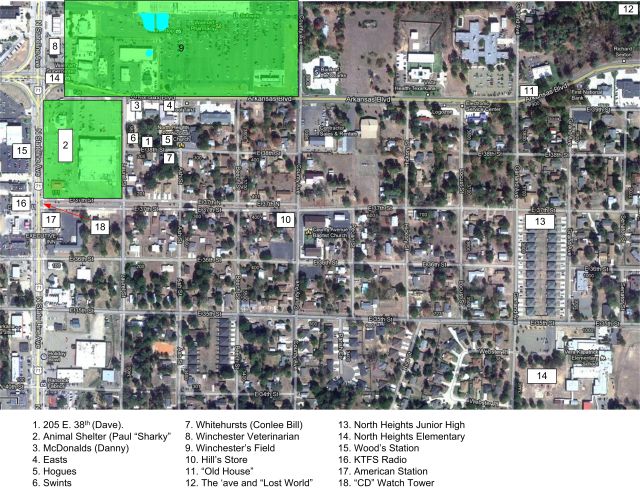
For the purposes of this narrative, West North Heights is bounded by Stateline Ave to the West, E. 36th to the south, E. 39th (Arkansas Blvd) to the North, and Garland Ave to the East. Items in the legend are referenced in the text by number.
Jest a Lookin’ fer a Home…
We’d lived in West North Heights once before. It became known in the family as simply the Green House,” as it was, well, green. My guess it that this was the summer of late 1952. I do not think we were there for more than a year, but I know we were there in 1953 because we got our first…and only, for as long as I lived at home…TV set when KCMC-TV came on the air on the 16th of August. I only clearly remember one thing from the TV at this point: It’s where it became clear I would love great music. As the senior toddler I was, I remember hearing something strange, and beautiful wafting through the house. I went towards it and the TV was on. It was apparently some costume play set in the 18th century and one of the actors was playing a keyboard. I asked what it was…and no one
knew. I tucked it away, and found years later that the sound that so enthralled me was that of a harpsichord.
One other memorable event, though it’s my brother Billy that remembers it, was the time Billy Carter and I decided to build a campfire in the living room. This was apparently against the rules and I didn’t get to play with Billy anymore.
Also, if you enlarge the image of the house above, you will see two of the most noble collie dogs you will ever see. Sunday and Tuffy. I loved them, and they were the size of ponies at my age. One of them was run down on Stateline and killed, and the owner came back for the other…turned out they were just staying with us while the owner relocated. I was devastated by both losses.
From the Green House, we moved to a farm out on the Texas side with an option to buy. That was in time for the school year of 1953/54. As it wasn’t North Heights I’ll not go into there other than I loved the woods and fields. However, that winter my dad’s leg developed a deep infection and he could not operate the shop. While I enjoyed his company at home that winter, we were in desperate financial straits. Somehow we managed to hang on to the shop while he recovered, but then mom got laid off at Lone Star as the Korean War wound down. We had to move. That move was to a new low income housing on College Hill called Bramble Courts. Over the one year we were there, the spring of 1955 until the summer of 1956, mom got called back to Lone Star and Dad recovered enough to fully man the shop. Mom started looking for a house. In the summer of 1956 our search for a home in which to stay finally bore fruit. We came to rest at 205 East 38th Street1 in the North Heights neighborhood of Texarkana, Arkansas.
Cold Bean Sandwiches
Mom and I had made the last foray to 502 Bramble Courts so she could complete the detail job that would leave it probably cleaner than the day it was finished. She completed the job around lunch, and said we should eat before leaving. I couldn’t imagine what might be left to eat, and said as much. Mom ratted about in the fridge and came up with some leftover beans. Much as I loved red beans, they didn’t look all that appetizing. Then she came up with bread. I asked her what we could do with cold red beans and bread. “Cold bean sandwiches, of course” said she as though I should have been able to figure it out. “But of course,” I thought, since Mom was always right, especially about food. I assumed I’d just forgotten the many cold bean sandwiches she’d made or something. She piled on the beans, which, being the last of a pot had the consistency of refried beans and spread like peanut butter, and we munched. I never understood why we never had these delicacies again.
A Place of Our Own
Five generations of our family would find shelter, peace, rest, food, and memories in this tiny, drafty, house. For the next 45 years Mom would hone her construction skills in a never-ending quest to perfect her proudest possession and greatest achievement. The place was never without some improvement going on. I can really not remember how many floor coverings “du jour” we’ve had on those
floors over half a century. Wallpaper, tape and bed, paint of all colors, and even the once the rage, but soon tacky faux wood wallboard have come, gone, and been replaced. The attic became a room, of sorts, that served as storage, extra sleeping area for guests, a laboratory and rainy day haven for us kids, and eventually a haven for my brother who now owns this place and has lavished improvements over that make my mother smile down from on high. Lillian Mallett was no saint (she’d be the first to agree), but the important thing is that she knew that and constantly strove to help others, love without limit, guide her children with grace and kindness…and at the same time, always following through when she said “If you “X,” you will get a whipping.”
All Creatures Great and Small
Mice, birds, cats, dogs, squirrels, coons, snakes, rabbits, sheep, ducks, geese, and whatnot would come and go under her gentle hands and loving heart, as well as a cross-section of humanity. Whether they left in a box or under their own power all left with greater wealth and better health. No one ever left Mom hungry, sick, angry, lonely, or hurt except of their own accord. The coon in the picture is just one of her many projects. It’s mother had been killed by hunting hounds. That one grew to be enormous, and learned to play a game where we’d let it out the front door, then run through the house to the back and it would be there ready to run in. She eventually released it into the wild.
The Cast of Characters
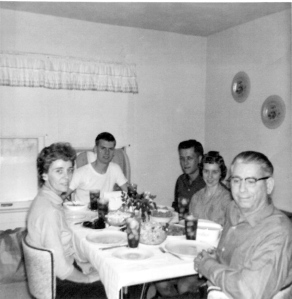
- Over the decades, many holiday meal shots were made from this precise position. It was the only place in the house you could get a picture of the whole table from.
The rest of the family as we settled in consisted of yours truly, David Alan Mallett, my sister Elizabeth Joyce (Betty), and my brother William Bryan (Billy), Rusty, a wonderful and loving tom cat, and Fritzi, and old Fox Terrier that was exclusive to Mom. Betty was basically an adult to me, being 10 years older, and Billy almost so…though that mainly due to his maturity and, intelligence as well as age, none of which I ever caught up with. While there is much to say about my siblings, they really had little impact on my personal experience in the neighborhood as related here and will be discussed in more detail elsewhere.
My father, the (sometimes) Rev. William B. Mallett, Sr, was sole proprietor of Mallett’s Bicycle Shop at 214 E. Broad and occasional interim pastor at many small country churches in and around Texarkana including Genoa Central, Clarksville, Whaley, and others. Here again his deeply conservative “business” sense insured we were paid with livestock, free meals, and such while Dad put hundreds of miles on his truck and used up his one day of “rest” per week in God’s service. I have much to share about my father, but, in fact, he figured only peripherally at home as he labored 10 hours or more per day, 6 days a week in the shop and then labored in God’s vineyards on Sundays. He was always barely up with work. You’d think we’d have been raking in the money, but Dad’s extreme attention to detail, exacting methodology, and lack of understanding of the true value of the incredible craftsmanship he brought to every job meant we barely got by. My older brother Billy loves to tell how he attempted to get Dad to take out an advertisement in the Gazette to drum up more business. “Billy, said Dad, “what do we want more business for? We have more than I can handle already!” End of conversation.
From Pasture to Neighborhood
Emmett McDonald said that when he purchased the property that would become 205 East 38th to build his new home after WWII, it was simply a block of land bounded by the Animal Shelter on the west, East 39th (Arkansas Blvd.) on the north, East 37th on the south, and County Avenue on the east. “East 38th” was simply a track from County to the gate at the rear of the Animal Shelter. The house he built there was quite small, but sturdily constructed with wood, not drywall, interior walls. Others of his age and class soon joined him in a building boom and Ash, Laurel, and more streets crossed East 38th until all blocks were formed. Conlee Whitehurst, the Adams, Thackers, Hogues, and others rapidly populated the new neighborhood until only the vacant lots in front and behind 205 and the lot behind the Whitehurst’s house remained unoccupied. Emmett’s parents built 2 blocks up the street, and Conlee’s parents would eventually move next door to 205. It was a family neighborhood. Sometime in the early 50’s Emmett’s frugal ways and increasing prosperity from his job at Red River Arsenal allowed him to build a fine white frame house at the corner of Laurel and E. 39th. He sold his original home to the Brooks and built on the corner of Laurel and E. 39th3. The Brooks had a son, Bobby, reputed to be overweight, sissified, and self-centered. I have this on the authority of Bill Whitehurst, Danny McDonald, and Paul Robins, my neighborhood peers. It may have been their way of making me feel welcome, or it may have been the truth.
A Domain of My Own
The house, then still bearing its rural postal address of Route 8, box 818, was probably smaller than our apartment at 502 Bramble Courts. However, it looked very big to me for some reason. Perhaps it was the vast yard that was to be my very own with its great defensive fence that would protect my domains from the snotty-nosed barbarians whom I’d feared over on College Hill, or maybe it was just the fact that it was quite empty. Either way, I recall remarking to my brother Billy that I’d never get used to living here. He said I would, and he was right. I am now not sure I’ve ever gotten used to living anywhere else. Even now, late at night when I lay in bed, I can summon completely and without effort the sounds of horse hooves and the murmured conversations of horseback riders ambling home from the Four States Fair on warm September nights . In the background one can almost make out the words of the announcer over the cheering crowd at Tommy Steiner’s World Championship Rodeo. Or it may be the sound of scratching at the window that would signal one of Paul’s occasional late-night forays down from the Animal Shelter to share a few minutes of fellowship and discussion, along with a furtively shared smoke.
“Rocket Radio” and August Heat
I can feel the cool plastic of the earpiece of my Rocket Radio, a 1.50 crystal radio I kept at my bed to travel the airwaves in search of adventure, always returning to “….cool, clear, water” intoned by the Sons of the Pioneers and played incessantly on “Mostly Music,” the all night sans announcer music program on KTFS. Of course, there is also the torture of tossing and turning in sweat-soaked sheets on August nights in that forgotten time when air conditioning was experienced only at theaters and the newest funeral homes. You get the idea. I was imprinted for life at 205 East 38th and, like a salmon, still return there compulsively.
Like Sleeping Outside, but with a Roof
Settling in was sensory overload. Betty got the center bedroom, Dad and Billy occupied the front, and Mom and I set up on the back porch. The back porch was completely enclosed, but had no drywall. An opening about 2 feet wide and at eye level ran completely around it on three sides. This was covered with a material no longer made that consisted of a string mesh, like a fish net, with about a half-inch mesh and sealed with some sort of semi-transparent, flexible substance. It provided no ventilation in the summer, and no protection in the winter. Then, as now, it was my habit to maintain a glass of water at my bedside. That first winter I remember noticing that it didn’t look quite right one deep-freeze cold morning. There was a ring of broken glass at the base, and on closer examination I found that nothing remained but the water standing upright and frozen solid. We slept under about 5 heavy quilts and I remember having to struggle to move under the weight. Of course, you didn’t want to move much as simply warming the area you occupied consumed several hundred calories and an uncalculated move into previously unoccupied territory by a foot would lead to a sudden freezing sensation that threatened to spread all the way to your nose unless you promptly withdrew. That Christmas we got our first electric blanket. While I am sure I received many exciting toys, all I can remember is the excitement of rushing back to that miserably cold room, spreading it on the bed, plugging it in, and then luxuriating in the warm glow that followed. It was a downright giggly sensation to be able to move one’s foot to a previously unoccupied area and find it just as toasty as where you’d come from. Next thing you know we’d be on the moon.
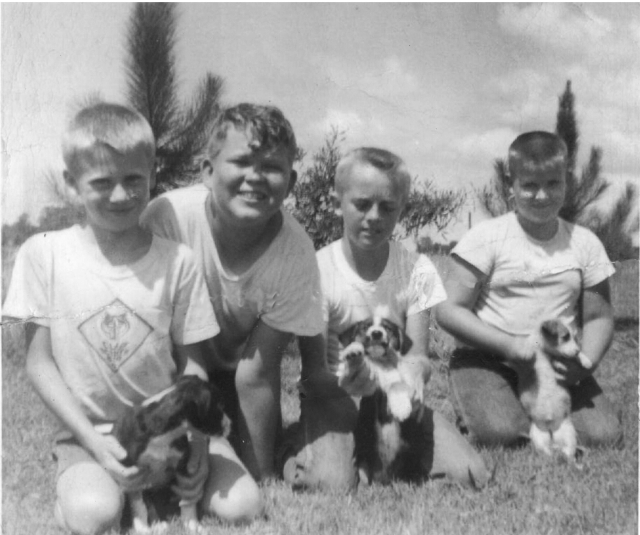
Dave, Paul Robins, Danny McDonald, and Conlee Bill Whitehurst with “Pound Puppies” in the field behind the animal shelter. We were inseparable.
The Four Horsemen of West North Heights
My introduction to the boys I would grow up with took a bit of time. I had the misfortune to move in just as they were completing a clubhouse. Clubhouses were very private affairs for boys, and only those who could show splinters, abrasions, cuts or other wounds associated with their construction were welcome. While I understood this, I yearned to see the inside of the structure that rose on the empty lot behind our house. It was L-shaped, with a 4 or 5 foot entrance tunnel perhaps 2 feet square and a tower rising some 6 feet up at the end. It could easily have come straight from a Little Rascals short with all the crazy angles, sizes of board, and strange colors. I never saw the inside. It disappeared after a couple of weeks, most likely at the hands of Emmett, Danny’s dad. He considered such things unsightly and dangerous and was responsible for killing many of our projects over the years.
Once the clubhouse was gone, I began to be included in the gang. The locals were Conlee Bill Whitehurst7, Danny McDonald, and Paul Robins. I want to state categorically that I loved all these guys and their families, and still do, but memoirs require one to write it as it happened, so not everything here may sound all that complimentary.
Bill was a chubby little spoiled kid who ate nothing but salad dressing on his hamburgers (aka “mayo” and “Miracle Whip” to southerners, “mayonnaise” being a substance I was not introduced to until my teenage years. Didn’t like it-still don’t) and got almost anything he demanded. This was good for the rest of us, as whatever WE wanted we’d plant in his brain and he would pester his mother or older sister Patsy until he got it. When we got thirsty on a hot summer day, we’d just start singing “Kool-Aid, Kool-Aid, tastes great, Kool-Aid, Kool-Aid, can’t wait” endlessly and he’d have it for us in a matter of 20 minutes or less. Same for chocolate milk That sinfully rich, sweet, thick Borden Dutch Chocolate was way out of our price range, but Bill not only got it, they had it delivered. We rapidly learned what day he’d be getting it and waited for the milkman. We’d pass the bottle along the line and it was a rare day indeed that the bottle entered the Whitehurst house containing anything but air and brown residue.
Danny was the youngest of the McDonalds. Tall, blond, and quite self-assured, Danny was a favorite of all the girls. He liked hotrods, custom cars, motor cycles, football, baseball, in short, all the things that bored me stiff. Danny’s parents, Emmett and Cora were austere. In fact, they were archetypical McDonalds in their frugal, neat and tidy habits, and austere lifestyle. Family Circle could have stationed a photographer there and had fresh copy for every issue for a decade of the quintessential ‘50’s post-war family. They had a formal living room that was strictly verboten for us untermensch jungen. It was decorated and furnished in the highest style of the day, so modern nothing in that room would have been recognized by Mother Nature unless it was one of the couple of days per year a human ventured in. Not a grain of dust, single hair, or fingerprint could have been found even by a forensic genius. Insects never entered as they would have starved to death and knew it. The only time the room was used was Christmas and when some persons of importance visited. None of us urchins ever saw visitors there, as we were invited to be elsewhere anytime such grand dignitaries might draw nigh. However, we could look through the door during the Christmas season to view the all-aluminum Christmas tree with coordinated chrome balls and rotating multi-colored light that proclaimed them at the top of the social and technological ladder. I am certain Mrs. McDonald thanked God every Christmas for allowing her to live in an age that eliminated those nasty falling tree needles that so despoiled her temple of taste. Of course, all sign of these festive decorations, gifts, and any sign anyone had ever been in there was magically gone by noon of the 26th of December.
Emmett C. McDonald exhibited exactly what one might expect of a “McDonald.” He was tall, healthy, and had piercing eyes that did not flinch. He was frugal to a fault. His automobiles always looked as though they’d just come off the showroom floor. Even his WWII Navy equipment he’d brought home after the war was spotless. In the decades I visited home he’d occasionally be driving by and stop, and we’d chat. Never changing. He stopped by about two weeks before his death when I was visiting my brother. I believe he was taken as a saint, as even though well past 90, he appeared to be in perfect health. God rest his soul!
Danny always got great toys at Christmas but I still don’t understand how he got any pleasure from them. One Christmas he received a Mattel Fanner 50. This was the great prize of that season, as it came with a real leather holster, belt, cartridges, and was nearly real size and weight. It had spring-load plastic bullets that could be re-loaded into the cartridge. Fan the hammer and you spit out six bullets into the nearest hostile injun before you could say “pesky redskins.” It was a dream come true, and probably cost 20.00. I don’t recall ever seeing it outside more than once or so, and then he refused to fire it so the bullets wouldn’t get lost. Of course, absolutely no one was allowed to touch it. As I recall, it hung by his bed until he was too old to play with it, then disappeared. Something indescribably sad about that. He also got a really great Army set one year with about 50 soldiers, artillery, tanks, trucks, and jeeps. We got a bit more use out of that, as I think even he couldn’t resist an occasional backyard war with trenches, foxholes, and our guys kickin’ the crap of the Adolf’s boys.
This frugality extended to mealtime. With a Texan father and Arkansas mother, I was raised in the tradition that anyone in or near the house at mealtime must eat or something bad would happen. I recall being asked to eat precisely once at the McDonald’s house and that was at the invitation of Judy, Danny’s older sister. While I recall the fact, I can’t remember what we had as I think the shock was too great. I recall we had green tea (iced), which tasted very strange. However, I am certain it was approved by Family Circle as being all the rage in the great cities of the east, like Memphis. Except for that, Danny being called to a meal meant not only leaving the house, but the yard as well. Lest any of this seem critical, it is not intended to be, but just a difference in cultures. This whole family were devout church members whose word was gold and love was real. Emmet passed away in his mid-90s peacefully after I’d leaned on his car and chatted with him in from of the house only a week before during a visit there in the spring of 2012. He sat ramrod straight behind the wheel of his beloved Ford, his deep blue eyes still clear and free of glasses. I loved all these people, and still do.
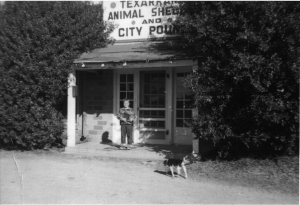 The Texarkana Animal Shelter and City Pound
The Texarkana Animal Shelter and City Pound
Paul Robins lived with his mother Vivian at the Texarkana Animal Shelter and City Pound7. The Shelter occupied all the land between East 37th and East 39th streets and from Laurel to State Line, or 4 city blocks. It was operated by the Humane Society, a group of little old Texarkana rich ladies. A bit of research says the Humane Society was founded in 1954, but the Texarkana group must have been much older than that as the facility appeared to have been there a long time, and the membership was all quite elderly and beginning to dwindle. There seem to be very few pictures remaining of the shelter, which is a shame. It would still be state-of-the-art today.
The shelter consisted of several divided sections for mature dogs, puppies, cats and kittens, a medical area, and food prep area, and up front, an office and living quarters. The mature animal area was a long hall with a large number of cells, each about 4 feet by 10 feet with. A drainage trench ran the length in front of the cells for cleaning. At the back wall of each cell was a metal door that slide up and down when you pulled a wire at the front. These were normally open so the animals could get outside where each cell extended about the same distance into the open air. Using the door, one could isolate the animals easily either inside or outside for cleaning or other purposes. Between the mature animal area and the puppy/medical/cat area was the food prep area. Food for all the animals was kept there in metal trash cans for easy access. The cats lived on a diet of jack mackerel, not cat food. The fish was actually canned for human consumption, but apparently so plentiful at that time it was less than ten cents a can and cheaper than commercial cat food. I found the water heater fascinating. It was the first demand unit I had ever seen and I remain a proponent of this methodology. It was ornate cast iron and did nothing until you turned on the hot water tap, when it would roar into life with a large blue jet of gas flame through which ran a coil of copper tubing where the water was heated very hot indeed and almost instantly. The unit appeared to be quite old to me, and I do not recall it ever failing.
From the food prep area, you entered what had originally been intended as a garage. Due to capacity needs, it was, by that time, the puppy area. To the right of the entry was 10X10 containment with a 3 foot or so wall where 15 or 20 puppies tumbled over each other in delight at each approaching footfall. Along the right wall stood a row of elevated cages about 3X3 foot cubes stacked 2 high with more puppies, probably the less sociable ones. The garage door was open in most weather to the outside. A room to the left housed the cats and kittens, as well as some of the more adoptable dogs. To the right in this room was a row of cages of the same design as the mature dog area, but only perhaps 6 or so of them, and on the right was another array of the stacked cube cages where cats and kittens mewed and hissed at each other, the dogs, and at visitors. With all these animals, you would expect quite an odorous atmosphere, but such was rarely the case. The entire facility was kept extraordinarily clean by “Nick” Nichols, who served as dog catcher, vet, maintenance man, and friend to us all, with help from Vivian and, occasionally, us kids. I still marvel at how few hands labored in that vineyard, yet kept every animal cared for and clean. Humane Society, indeed. The air quality was further helped by an ingenious ventilation system that featured several large ventilation towers that extended 6 feet or so above the flat roof. Each had windows on all sides that could be opened to force or expel air from all animal areas of the building. While no authority on such matters, I rather doubt that a significantly superior design for an animal holding facility could be developed. The entire facility was concrete and brick, and quite attractive.
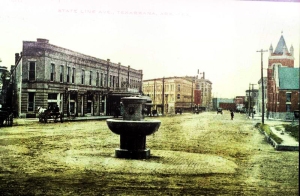
In the early 20th century, 125 of these were presented to cities across the nation. Ours was originally here on Stateline in front of the Post Office.
The shelter fronted on State Line Avenue about 100 feet from the road and in front stood a large fountain. It was designed as a square marble column about 6 feet high with a round catch basin half way up the column at a good height for horses to drink. It was an ingenious design, as there were four ground level basins on the base where dogs and cats could drink, and water spurting out from all four sides into the horse trough where humans could drink. Between 1906 and 1912, the National Humane Alliance presented somewhere around 125 Horse Watering Troughs to cities and towns across the country, including Texarkana. Hermon Lee Ensign, who died in 1899, dedicated his fortune to funding the National Humane Alliance in order to “spread about humanitarian ideas among the people.” Such education, Ensign hoped, would instill in people, “especially the young, ideas of humanity both to the lower animals and to each other.” The fountains were produced in Vinalhavan, Maine. It had once sported bronze lion’s heads on the four sides of the column that rose from the round catch basin, but these had been looted long ago and in those days only an old shower head served as a water supply sticking up out of the top of the column. When turned on full blast on a day with any breeze, the water would rain down mostly on the ground in a cool spray we often enjoyed on hot summer days. A few gold fish inhabited the water. A large sign proclaimed “Water for Your Horses” at the front drive entrance. Sometime before the shelter was demolished, the fountain was restored to its former glory and placed in the little triangular park at the corner of what is now MLK and State Line. It was quite pretty and nicely lit at night, but all attempts to keep it flowing were finally given up after losing the battle with local pranksters who continually kept it overflowing with suds. Not sure if it flows today.
As you entered the Shelter at the front, there was a small anteroom with a service window on the left. Vivian’s desk was just beyond the window. There were several pictures and posters on the wall. I remember two of them. One, perhaps ahead of its time, had a picture of some animals in the woods with a large caption reading “Shoot with a Camera, not with a Gun.” The other was an extraordinarily poignant photograph needing no caption. A dog lay on the pavement, obviously quite dead. A police officer wearing a white Stetson hand his hand on the back of a young boy whose face was contorted with the agony of first loss. I wish I had that picture.
Straight ahead from the front door entered the office area. It was large and served as a waiting area and business office during the day, and living room/den after hours. There was a floor model TV on the left wall, a sofa and a few chairs, and, of course, Vivian’s desk. Here she presided over every detail of the operation of the shelter (BTW, we NEVER called it “the pound”) in an era when few women ruled over anything more that a typewriter or classroom. In the rare moment she would relax during the day from her duties, Nick, Paul, and I might gather there to discuss cabbages and kings. After hours, and especially in the summer, Paul and I would watch TV there and sneak smokes in the tiny bathroom. Here we spent summer and weekend nights watching Johnny Carson from New York and drank in the marvelous music of Skitch Henderson and the Tonight Show Orchestra. We also watched John Wayne, Audie Murphy, Jimmy Stewart, Henry Fonda, Humphrey Bogart, et al, commit crimes, solve crimes, and whip the Hun and the Nip. On New Years, we’d take blankets out to the porch in front of the doors so we could watch the rockets and roman candles light the skies at midnight.
To the right of the entrance was the door to the apartment where Ms. Vivian and Paul resided. Paul’s older brother Noel (Rollie) also lived there for a short time but married and moved out within the first year or so of my arrival. The kitchen/dining area was long and narrow with just enough room for a table and chairs on either side. If a third person sat down they had to scrunch up to the table for someone to pass. Paul and I sat there and devoured endless loaves of bread toasted and spread with clear Karo syrup. I don’t know why this tasted so good there, as I never did this at home or anywhere else. However, it was our standard munchie at the shelter. Two large bookshelves flanked the door holding the finest collection of National Geographic, Popular Science, and Popular Mechanics I’ve ever seen. The oldest Popular Science went back to near WWI. Many sported fanciful designs for mile-high towers you could drive a car up like the Tower of Babel, huge airships, floating cities, and many other wonders of the world to come. I spent endless hours devouring every word, including the advertisements and classifieds. Of course, like many of my generation, National Geographic provided me with my first introduction to naked native girls (and boys). It’s all about context, isn’t it?
Beyond the kitchen/dining room was one large room and bath that served as bedroom and general living space. Vivian’s single bed was on the right, and Paul’s on the left. After Rollie’s departure, Vivian had a large divider cabinet/bookshelf/desk surface constructed to partition the room. It did much to improve the barracks-like atmosphere of the place.
A “State of the Art” Facility
As I mentioned earlier, the Texarkana Animal Shelter occupied about 4 city blocks. It was 1000 feet across the front. I know this because at the southwest corner of the property at the intersection of East 37th and State Line a large yellow sign read “Intersection 1000 Feet” referring to the upcoming intersection of State Line Avenue and what was then called Loop 14 on the Texas side and East 39th on the Arkansas side.
Devil Horse Shorty
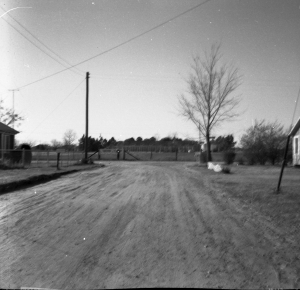
The space between the gate and the building on the far side of the field belonged to devil horse “Shorty.”
The large fenced field’s soul occupant, except when an occasional stray horse was picked up, was Paul’s horse “Shorty.” I didn’t like Shorty, and Shorty didn’t like me. We were OK for the first few months of my travels through the field to and from the shelter, but Shorty soon decided to enter a life of terrorism. Once I’d get about fully committed to the crossing of the field, he’d charge at full speed with hooves flying. This, of course, frightened me beyond belief. Just as his devil eyes and flaring nostrils seemed even with my head, he’d veer away hooves only inches away with a strong horsey smelling wind from his huge body. I’d take off running towards the shelter as fast as I could go, knowing he was repeating the procedure behind me and that at some point I might fall, he might miscalculate, or even come to the decision that nobody would ever find out he’d plotted to trample that small, skinny, scared human to tiny bits just to break the monotony. Shamed, I never said a word to Paul, Nick, or Vivian about these incidents. I did, however, eventually confess my fears to my Dad, in whom I could trust. As always, he understood, and, as always, he had an answer. It wasn’t an easy one, and I would never have had the guts to trust it except for my unwavering faith in Dad. He said I needed to get a nice, long, solid stick, like a broom stick or rack handle to carry with me on the next trip then follow his instructions. I don’t recall what I came up with, but it was long, and very hard. I stepped through the barbed wire and saw no sign of the 4 legged Devil. Right on cue about midway, I heard thundering hooves. I turned toward the source of the sound and Shorty was making ramming speed with his eyes glaring. I did not move, and raised my stick. My heart was not pounding. It was not beating at all, but frozen long with the rest of my body in abject fear and probably feeling it didn’t need to pump anymore since it was only moments from death anyway. In the fraction of a moment as Shorty was in his death turn away, my arms loosed with strength of months of pent up fear, bringing the stout pole down in an arc that intersected the center of Shorty’s nose. CRACK!, and all was momentarily silent. Shorty had come to a full and sudden stop going to his knees on his front legs. His eyes appeared to be crossed. For a moment, thought I’d killed or severely injured him. His knees suddenly popped up, and he completed his turn roaring away at incredible speed. Gawd, I thought, now he is going to kill me fer shure. I stood frozen, my stick still pointed at the ground where it had bounced off Shorty’s nose and I waited for the endgame. It didn’t come. Shorty disappeared over the low hill towards the State Line fence and did not return. Ever. That horse had had enough of me.
The field that surrounded the shelter would play host to many of our adventures and misadventures over the years: Our first camping trips, firecracker and rubber gun wars, puppy games, cave digging, and much, much more. These will be covered in other places as appropriate. The only other feature was the pet cemetery. Many animals had been buried there over the years, some with stones as large as those for a person. One had a picture of a lovely cocker spaniel immortalized in tintype. The one that always drew me, however, was a fairly large one of a dog who had lived 21 years. When you are 10, the idea that a dog had lived 21 years is extraordinary.
“I’ve had that dog longer that I’ve had you!” That’s a remark Vivian made to Paul after he’d committed some offence against Queenie, her 18 year old fox terrier who was, in fact, queen of the pound. Paul was, from the earliest time, my preferred companion. He and Danny were two years older than I, and Bill was a year younger. Bill was OK, but not all that stimulating and required constant supervision. Danny was fun, but our interests were not all that close. Paul loved playing Army, dogs, roaming the fields, and made great conversation. He was also an incredible manipulator who played the rest of us like harmonicas. One hot day in June when the blackberries that grew in the ditches on either side of East 39th street were ripe, Paul appeared with stack of pint baskets. He told us he’d buy us sodas if we picked berries. This sounded like a great deal to us, so we set to work while he lounged in the shade. After an hour or so of sweat, briar wounds, and fear of the snakes who were said to linger in berry patches, we had picked perhaps 6 pints. True to his word, Paul took us over to Wood’s service station across State Line where we were treated to the enormous 16 oz. “Mr.” Colas at 5 cents each. Then Paul disappeared with the berries. I later heard Mrs. Whitehurst comment on the wonderful pint of berries she’d purchased at the bargain price of 30 cents from Paul. Hmmm. 6X.30=1.80-.15=1.65. Any modern company capable of that sort of profit would undoubtedly be subject to investigation. Anyway, that was, and remains, Paul. Always swinging a deal, and usually leaving everyone feeling like they got the better of it. Paul told me in later years many stories of fortunes he’d won and lost, never with any sense of bitterness. That’s because it was never about the money, but about the game. I learned a lot from Paul. He’d make a great book.
Flamingo Pink
My “room” underwent many changes over the years. First can drywall, windows, and a heater. The drywall was my mother’s first construction project. The tape and bed was, well, amateurish, and the paint: Flamingo Pink. I kid you not. Same color as those garish lawn birds of the day. However, she got better and everything that followed was “gravy” compared to having real walls and heat. I occupied that space from 1956 until my marriage in 1972. While there are many memories associated with that space I will only mention a few at the moment, one of them a “prophecy” that came true. Our television, a 1953 RCA 21” set, was in the back corner across from my “room,” which had no wall to separate it from the washer, dryer, etc that took up the rest of the space. I would watch Johnny Carson (live, from New York, with Skitch Henderson and his orchestra) and the Late Show movies on weekends and in the summer. As I turned it off for the night and watched as the little afterglow from the electron gun would fade as a spot in the middle of the screen I would fantasize about a little projector of some sort I could lay in bed and show TV in color on the ceiling over me. Crazy kid dreams… I have such a device now, and it cost less than that old RCA. On the other hand, it’s almost obsolete already while that RCA served from 1953 until I gave it away in El Paso, Texas about 1974. Time is getting compressed.
Snips and Snails, and Puppy Dogs Tails…and Reels
I still have about half of the books and a few odds and ends of this stuff. I still have the newspaper, the Texarkana Daily news proclaiming VE day, but it is pretty much disintegrated. Newsprint just doesn’t last outside a vacuum. The dresser on the right is still in the house. It was my mom’s and dad’s original from c. 1938. I suspect it will soon move to my brother Billy’s new home on Beaver Lake in the next month or so. However, he’s decided to keep the house so we’ve a place to be in split T (plus, he’s an old softy and just can’t get rid of it as long as mom’s ghost hangs around) and let his kids deal with it after we’re gone. I’m glad. As to the rest of the stuff in the picture, Billy still has the transformer hanging on the wall as well as the fine Lionel train it powered. I was using it for a number of nefarious purposes like striking arcs across pencil leads and starting and stopping frog hearts (I kid you not, “paddles” were still in the future…). That little box with the handle and knobs on the far right of the bottom shelf was the Lloyds reel to reel recorded my mom got me for Christmas one year. It fueled a lifelong fascination with recorded sound that continues to this day. Remarkably, I still have one of the little 3 inch reels I recorded on this thing that, amongst other things, has some audio from a Johnny Carson Show on it. The ship models I took down to Winchester’s pond my senior year in high school, put a bit of gasoline in the bottoms, rigged them with firecrackers, and pushed them into the water blazing in a Viking rite of passage from childish things. Right. I was an idiot…
Redemption – or “Don’t you hate it when your big brother proves his superiority”
Note the steamboat model just above the books on the left end of the second shelf. It was a model of the Robert E. Lee I got for Christmas and labored mightily to build it. It had a battery motor and the paddlewheels worked. I decided to take it down to the larger ponds beyond Winchester’s (today’s Wal-Mart on Arkansas Blvd) and let it sail across. My older brother Billy (AHS ’61) and Danny McDonald (AHS ’65) accompanied me. I set her off and she looked beautiful. It was a good 100 feet across the largest pond and she was on the long run. About halfway across Billy and Danny started throwing rocks. Not sure about Danny, but reasonably sure my bro wasn’t really trying to hit it. Nonetheless, both real river boats and model river boats are shallow draft craft and the waves were causing her to take on water. I pleaded with them to stop to no avail. She made it to within a few feet of the east bank, settled to starboard and went down. It was winter and going in wasn’t an issue, as well as that was the dam side and dropped off quickly. Both brother and friend apologized profusely and profoundly, but I was not buying it.
I returned with a rake and dragged the bottom without results. I returned again a few days later and manage to snag her. Not much damage, but the engine was shot, so I put it on the shelf until that day when all those models met their firey deaths at sea in my final battle with childhood.
A few years back my brother and I were having one of our brotherly beer and BS sessions on the deck he built at the house and talking old times. Fact is, Billy is about as good as brothers come and I confided that in our entire lives that the Robert E. Lee incident was the only one where I felt he was cruel. I really wasn’t terribly serious. From what I’ve heard, big sisters and brothers can be REALLY ugly. That was about as bad is it got with him, though, and I said so.
I forgot about it.
In 2009, by hook and crook I was lured up there to the house without my wife and kids on my birthday. My sister-in-law, Glennis and Billy said they wanted to take me out to dinner for my birthday and off we went to Zapata’s. As the waitress approached, Glennis said “You guys have a good time” and disappeared…very strange. Billy said “Follow me” and we headed off to the dining room on the left and there at the table were Danny McDonald and Paul Robbins. What a gift! But wait, there’s more…
The dinner was wonderful and we reveled in old times. Then, we headed back to 205 E. 38th for a few more beers on the deck. Glennis approached with a rather large gift box and presented it to me. Inside was the model in the picture to the left, hand built by my loving brother with an inscription that read: “Redemption.” Not sure how it makes me feel having absolutely NOTHING to hold against my big brother, but I think I’ll keep him.
Mickey
On a cold night in the winter of 1956, I was lying on the bed in the front bedroom when my mother arrived from somewhere. She came into the room with something in her arms and dumped it on the bed. It was a Boston terrier puppy that immediately commenced to lick my face vigorously. It was love at first sight. Mom said she’d been driving home on Loop 14 and saw this puppy running right down the middle of the highway. Of course, she stopped and scooped it up. Being the person she was, she took out a classified ad in the Gazette announcing we’d found this animal and to call if they owned it. I prayed mightily that no call would come. It didn’t, and Mickey became my first dog and the finest friend and protector a boy could ever want. Mickey was absolutely without fear. As I would go through the fields towards the ponds, Mickey would take point and criss-cross in front. Often, he’d find a water moccasin. When he did, he’d freeze and stare at it. It would strike, and he’d expertly dodge or leap out the way, then re-approach. He’d repeat this as many times as it took for the hapless snake to tire. Finally, the snake would strike wildly and Mickey would make his move, clamping his steel trap jaws right behind the head. Then, he’d violently shake the snake until it was lifeless and present it to me. Many of his kills hung in various states of decay on the fence along E. 39th street. As this expands, I’ve other stories to tell of this wonderful animal, but not at this moment.
General Features and Layout of West North Heights
The rest of the neighborhood was like this. East 37th street formed the southern boundary and we referred to it as the “double streets” as it had a median with a power line running down it. Traffic went both ways down either side, much to the confusion of big-city visitors. While our usual beat included only the shelter, the 4 blocks where we all lived, and, eventually, Winchester’s field9, Mr. Hill’s Store10 represented an extension. When we first moved there, there was another store catty-cornered from Hill’s in an old red brick building called Ruby’s19. It was an old red brick structure that had undoubtedly been there many, many years. Today, it would be remodeled into a fine home, but it was unfortunately torn down before such concepts took hold.
Hill’s Store and Creamer’s Barber Shop
Mr. Hill’s little store, however, runs through my formative years constant and unchanging, just like Mr. Hill himself. It was a little frame building that faced the corner of County Avenue and East 37th street such that I still don’t really know whether the official address was on 37th or on County. Some said County, some said 37th, and others had no opinion. In either case, its red shingled roof, neat white siding, big round Coca-Cola sign, and wide, shady porch said “Refreshment.” Opening the screen door using the Butternut Bread door pull like those found proclaiming similar bread or soft drink brands on similar screen doors throughout the south in those days, you were immediately confronted with Mr. Hill himself, keeping watch from the U-shaped register area from which he rarely moved. I don’t recall there being a chair or stool in that area, and it seems he was always standing behind the register regardless of whether a customer was present or not. Mr. Hill was old when I got there and old when I left. I don’t recall his ever having a harsh word for us kids, though I find this hard to believe given our habits. His ancient cash register faced the door, and had a rack over it where he kept the little pads that recorded the credit transactions of the neighborhood. To the right was the soft drink box, one of those that had the channels in it where crown-capped bottles hung. Extracting one meant pulling along the channel, through the turns, then out the front opening where there was, in most places, a lock mechanism for coin vending. All children hated these things, as many of them required considerable force to activate and the slightest mis-action would result in it re-locking before you could remove your drink. A nuisance today, but then such a loss often represented crushed dreams of cold refreshment and most of a day’s allowance, a tragedy indeed. At Mr. Hills, though, this was not a danger since soft drinks were paid for at the counter and there was no devil lock mechanism to fear. The entire store was, perhaps, 25 feet wide and 20 feet deep. I do not recall what the two rows of shelves that ran parallel to Mr. Hill’s position on the right carried, but across the rear on that side was the dairy/deli case. Here one could find quarts of ice cold Borden’s Dutch Chocolate for 23 cents representing over 2 days allowance and therefore a rare treat, indeed. There was also milk, butter, cheese, eggs, and meats. The electric deli slicer that so silently and efficiently produced perfect slices of meat and cheese always fascinated me. I think it frightened me a bit as well with images of quietly and efficiently removed fingers. On the wall behind this case hung a Dr. Pepper sign proclaiming the joys of hot Dr. Pepper for the perfect holiday. Yuck. Talk about a brief history of a campaign that failed…even the most devoted Dr. Pepper fan found this concept quite disgusting though I understand it had a brief period of popularity in Scotland, home of the “gee’us a hot orange, lassie.” It also touted a TV show that appeared only briefly before disappearing into the galactic background noise for eternity, but preserved on that back wall for another decade here on earth, and perhaps even today behind those boarded windows. To Mr. Hill’s left and on top of one of the goods shelves was the candy rack, easily, and by necessity, within his view. All day suckers, Bit O’Honey bars, Peanut Patties (as available only in East Texas), Kits (2 cent packages of 5 square chewy caramels of various flavors) Luden’s, Smith Bros.(a licorice-flavored cough drop that came in a package flanked by two bearded old civil war veteran guys with a very unappealing picture of a smoke-belching factory in between), Vicks’ Cough Drops, wondrous candies from Mars, Curtiss, and others, and the large glass jars that held big cookies for a nickel, all, and more, beckoned, confused, and confounded the lustful eye of hungry children. To the left of the front door was the freezer with its 4 small doors on top. It was filled with Popsicles of cherry, strawberry, grape, and, occasionally, blue coconut. These represented the closest thing to aid conditioning we had in those days and cooled the panting tongue for as long as they lasted. Of course, when food value was the issue, there were Fudgsicles in, of course, fudge flavor and banana, and the roundly hated by boys and only consumed by girls Dreamsicle. This mongrel bar had swirls of pink color in white and I never figured out just what the flavor was supposed to represent.
Haircut, 2 Bits
Next door to Mr. Hill’s Store on E. 37th was the little building that held a women’s hair salon on one side, and Creamer’s Barber Shop on the other. Creamer was a pretty average barber, but that was irrelevant for kids in those days since we pretty much wore flattops that required only about the same level of skill as an Army boot camp barber. Haircuts were 25 cents and took about 5 minutes. As you waited, there were comic books, which, of course, you’d read dozens of times and had more pages missing on each pass. There was also an official U.S. Air Force spotters guide to world military and civilian aircraft which I found fascinating. So fascinating, in fact, that I still have it after “accidentally” walking out with it one day. Creamer could have been a robot, as all he had to say was “Next,” and all he had to do was use the same set of clippers to mow rows from back to front like a small lawn, then say “Next” again and repeat the procedure. Well, he had to remember to hand you the piece of waxed paper-wrapped Fleer bubble gum with the never-funny cartoons inside the wrapper and the pink sugary gum with a slight undistinguishable flavor made perhaps by the same folks who supplied whatever flavored Dreamsicles.
We knew a number of the kids who lived on 37th, but had little truck with most of them and rarely ever visited. Jerry and Susan Sullivan, Mike and Gary Cherry, David Williams, Kathy Edge, Junior Blackburn, and a girl I knew briefly in the second grade named June. I remember only one thing about June, though I apparently got to know her fairly well as the incident happened at her house as we’d walked home together from North Heights Elementary14. I am pretty sure Susan Sullivan was also there. It seems June’s parakeet had gone to Jesus sometime during the day, and had assumed that tell-tale position with feet up that indicated the cage was no longer necessary. She was heartbroken, and Susan and I comforted her. Pulling herself together, she emptied a kitchen match box and laid out Polly (or whatever it might have been) in it wrapped in a soft hankie. After admiring how natural the former parakeet looked, we processed to the rear of the house where, as men have done since time immemorial, I was tasked with digging a hole. As I began to cover the bird’s final roost, June crossed herself. I’d never seen such a thing, and I asked her if it was to ward off warts or whatever. She explained it was something Roman Catholics do. This didn’t help me much as I had never met a Roman Catholic nor did I have any concept of what Roman Catholics do, besides worshiping the pope and all going to hell. I was, of course, a Christian, and attended a Baptist church like all Christians. Anyway, I did not really care to know more about this quite possibly Devil-inspired ritual, so I went home. I do not recall ever seeing June again, and can only assume that perhaps those Watchers of her strange cult had whisked her away to some reeducation camp for divulging their wicked spells to outsiders. A shame, as she was sweet and girls were all too rare in our area, and downright non-existent in our immediate neighborhood.
One other oddity was a green, wooden tower18 some 50 feet tall with a small room and walkway constructed on the median at the intersection of 37th and Stateline about 1960 or so. I seem to recall it had something to do with Civil Air Patrol but never saw it used for anything. It stood until it was rotten and near collapse before it was finally torn down. If anyone reading this knows what that was all about I’d love to know.
At the State Line end of 37th street was an American service station17. It was notable in that you could purchase kerosene there at 5 cents to fill a quart Mason jar. It was also the first place I ever heard of where you could purchase unleaded gasoline, then called “white gas.” They sold it as Premium, always referred to as Ethyl at that time due containing Tetraethyl, a lead compound that slowed combustion to prevent “knock,” a common engine ailment of the day. In fact, by that time all auto fuel gasoline contained Ethyl, which gave it that orangish color and higher octane was what actually distinguished higher-priced “Ethyl” from “Regular.” Anyway, it seems the visionary folks at American decided their high octane gasoline didn’t need Ethyl, and figured they’d keep the money that the others paid to American Tetraethyl Corporation and make it all look like a good thing. The put what they called (and marked with big letters) a “Final Filter” just before the hose nozzle and ballyhooed the water-like colorlessness of their premium fuel as testimony to its power and purity. How well this worked is lost to history, but many may recall the “clear” fad of the late 80’s and 90’s which it foreshadowed. I rather doubt that sales of such fuel for use in Coleman lanterns and stoves accounted for much, but I am certain it put a dent in Coleman profits on their expensive fuel once everyone discovered that American Ethyl worked just as well and cost half as much. At that time, service stations also provided free maps of all nearby states and regions. Absolutely wonderful, and hard to imagine now.
Directly across the street was KTFS radio16, 1400 on your dial. In the 50’s and 60’s it was THE rock n’ roll station. I do not know a lot about its history, but I know a number of great entertainers, Elvis Presley and Hank Williams among them, performed there. I also do not know what year the station on Stateline at 37th was built, but it was something of a “timeless” design and always looked new. The beautiful performance studio could be seen through a very large, soundproof window that ran across the center of the building. Inside, a studio grand piano sat ready with a microphone. The back walls were an undulating cool green acoustic material, very deco in style. A u-shaped drive was in front, and could be seen from the control room which overlooked the studio on the south side. I have heard that the rarest Elvis recording, an interview and some music recorded there in the 50’s when Elvis was playing the Municipal Auditorium and hanging out at the Razorback Drive In, was made there. Seems there are only one or two known copies.
About 1960, I was given a Gilbert 80 power reflecting telescope for Christmas. That very night, the first thing I trained it on was the red light on the top of the KTFS tower that rose behind the station on Stateline.
“More news any moment, more news any moment, dah dah dit, di dah dah dididit, dah dah dit, di dah dah dididit, MORE NEWS ANY MOMENT!” went the news jingle of the day for “KTFS 20/20 News, news with VISION!” As a young teen, I often listened on my “rocket radio,” discussed elsewhere in these pages to “Mostly Music,” the late night commercial-free program interrupted only occasionally by a lady whispering slowly “K—T—F—S.”
By 1966, a good friend of mine from AHS, Larry Grant, had his 3rd class ticket and a job there. I’d hang out in the studio on weekend nights and keep him…and the young ladies who were always calling…company. I was 16 and a sophomore. Often, cars with young ladies would circle the drive and sit in plain view of the control room, which, as previously mentioned, was behind two glass windows from the drive but had a clear view to the northeast. We’d wave and such. What one learned very quickly was that the most sultry, sexiest voices on the phone were fat and ugly…
One night we actually met a couple of them as they were still sitting in the drive as Larry signed off. One, who had been the one on the phone chatting with Larry earlier, was reasonably attractive and had invited him out for a spin. She had a friend with her…achingly beautiful. I got stuck with her as her friend insisted. I learned later that night she was 13! No real names, but her nickname was “Joe” as her dad had expected a son. Condensing this part, her mom brought her by my house a couple of years later with a gift for me that signified her “OK” for us to see each other and we were “boy/girl” for a couple of years until I went off to college. She was a true teen love and I’ve often wondered “what if…”
Rubber Ducky, Napoleon, and Jim Cooper
Anyway, I followed Larry and got my own 3rd class Radio Telephone Operator Federal certification in 1968. In the summer of 1970 I worked at KTFS for station manager Jim Cooper. I was a pretty awful DJ, but managed to hold the job. I got a call one night from Jim, who was at the National Broadcasters Association (NAB) convention in Kansas City. He was totally psyched. “Dave, I got this HOT record you GOT to play as soon as you get it! It’s called ‘Rubber Ducky.” Right, Jim. It showed up, and the rest is history. Another memorable moment was “They’re Coming to Take Me Away” by Napoleon Bonaparte the Third. It was requested over, and over, and over again until I was sure they were coming to take me away. I finally held a phone poll to see how many other were disgusted and promised to bury it behind the station if the votes went that way. They did, thank God. Got a chewing from Jim about that…
Did a stint as a field reporter for some reason or the other towards the end of my tenure and it was exciting, and disgusting. I was detailed to try to get a radio telephone line for live reports from news scenes. This was really cool, as a radio telephone was exceedingly rare and expensive in those days. There were only a few circuits available and almost always “busy.” One wreck on US 71 near the Index Bridge pretty much cooled my enthusiasm for “on the scene” reporting when a cop suggested I look under a car to see what that trail of stuff was down the road behind it. No more details on that here…
All the young folks listened to KTFS then. KOSY was an older audience, KCMC was AWESOME country, and I frankly don’t recall any others…though I worked for a while at one in an old movie theater near the Texas Viaduct for a while that I think was KATQ. There, I learned to program a Continental Electronics Prolog Mark II radio automation system. First computer I ever worked with. The paper tapes were provided by a startup called “Electronic Data Systems” run by a guy from Texarkana by the name of Ross Perot. Wish I’d paid more attention to him and less to radio.
Next down on the KTFS (west) side was Wood’s Service Station15 which sat directly across from the shelter. It was an olden wooden station and served two purposes in my life. One was to provide “Mr.” Cola in the 16 ounce bottles for a nickel in the summer time, and the other was exposing me to violent death for the first time in my life.
Violence Visits West North Heights
I went to school with the son of the victim of this crime, but as my memory of this tragic even may not be entirely accurate. I don’t remember him well, and probably would not remember him at all except for the fact his father took a bullet one evening at his service station. I don’t recall Paul being there, and may well have seen the police cars at the station from the front of our house. For whatever reason, I walked over there. Uniformed and non-uniformed people were milling about, with the largest concentration just under the edge of the awning. A ’55 Chevy sat with its door open nearby. No one paid me any mind, as this was a different time and there was no police tape, procedures, etc. Just a bunch of people milling around a corpse, as I finally saw by worming my way through the surrounding crowd. Face up on the ground was a gentleman. There was no blood, and it really didn’t dawn on me that he was dead until he didn’t move for sometime and the coroner started poking around at him. He opened victim’s shirt and I could finally see, with difficulty, what looked like a small, round cut with a red center, but no other signs of blood or trauma. Problem was, it was directly over his heart. Seems some acquaintance or associate had come in with whom he had some sort of business. There was a disagreement and the victim stood and put his hand in his pocket. The other person thought he was going for a weapon and shot him with a .22 caliber pistol. The tiny bullet entered his heart and killed him immediately. However, he was unaware of this and walked out of the station before his body said, “No, you don’t understand, I am quite dead and you are on your own” and failed on him. At least, that was the story told by the defendant. I’ve no idea what the final outcome was, but in those days he probably walked given there was no one to dispute the claim of self-defense, and that was inevitably acceptable then when the victim was black, usually acceptable if the victim were white and there was no one to dispute it, and only not acceptable if the victim was white, you were black, and in your own bedroom having bludgeoned the white man with a lamp after he fired and missed with a shotgun with his name engraved on it. That, of course, was a hanging offense to any reasonable and prudent person. It is odd that this experience at, perhaps 11, did not scar me in any way. It may have been the lack of blood, or the simple ordinary circumstances of being somewhere generally safe and familiar. I really don’t know.
While perhaps hard for the present Texarkana citizen, and even for those of those who where there, to believe, there was nothing between the Wood’s service station (now occupied by a car dealership) and Loop 14 (Texas Blvd) except open fields. At the corner stood a truly monumental Oak tree22, perhaps 8 feet in diameter at the base where produce sellers set up during the growing season. This was before all fruit came in precisely the same size, color, and tastelessness from California. You could purchase as many as 5 or 6 types of peaches from golf ball to softball size, all detectable by the nose from 100 yards with a fragrance that smelled better than modern engineered peaches taste. There were Stone Mountain watermelons so large I could sit on one without my feet touching the ground.
Across Loop 14 stood the Loop Drive-In Theater in 195621. It was either already closed when we moved there or closed shortly after. I don’t recall it ever being open. It was used for several years as a massive watermelon lot before the Holiday Inn was erected. Hard to believe that the Holiday Inn has already been replaced twice by other things: The world moves on.
Winchester’s Veterinary Hospital8 occupied the northeast corner of State Line and E. 39th street. I am not sure just how good a vet Dr. Winchester was, but he had a very big house attached. He had at least two children, Crystal and Pat, both older. I still don’t know why we never saw any of them even though we were very close. I eventually met Pat when he opened Pat’s Beer Depot which shared a covered drive through with order windows on each side with Tom’s Jug House. This replaced the American service station on the corner of E. 39th and State Line sometime in the 60s. Danny married Patsy later and they had a wonderful life together. I attended Patsy’s funeral in the spring of 2013 and gave Danny, looking straight, tall, and clear-eyed like his father, and Charlene, just as straight…if not so tall…and beautiful, hugs. Full circle.
The smell of burning animal corpses that often wafted over the neighborhood from Wenchester’s testified that not all the good doctor’s patients made it. I presume he charged either way. Mickey would occasionally drag home a massive, charred, stinking piece of cow, of which he was duly proud and mom just as duly disgusted. Behind his house Winchester’s field stretched for over 8 blocks. We had a baseball field at the east end of it that alternated with football by the season. Winchester’s pond, a very small stock tank, provided the nearest open water, but two much larger ponds and what we called (with good reason) the bar ponds were located another 200 yards distant on another large piece of property. They had edible size fish and a bumper crop of water moccasins which we killed all summer long and hung on the fence along East 39th for all to see. The rectangular shape of the bar ponds led us to believe it had once been a fish hatchery. Along the fence line between Winchester’s field and this area a number of large hardwood trees remained, and one of these would hold our final and greatest clubhouse.
The ‘ave, and Lost World
From the east end of Winchester’s field it was another half mile or so until our next regular haunt. Of course, this was not until we were in junior high school, but we spent a lot of time there as soon as we discovered it. There was a patch of young pines, perhaps four acres that was a fine place to camp and play well away from any houses. At the north end of this patch was a broken down fence and a featureless open field of about 150 yards across. Once across there was a stand of mature pines and hardwood at least 10 acres in extent where many adventures took place. We had played there in this marvelous, dense, cool jungle for several years before we discovered “the ‘ave. 12” We’d found a number of warrens and trails that only those who were familiar with the place could find, including one great place with a very large hardwood that looked like something from a fantasy movie. We’d take unsuspecting cousins and acquaintances there and suddenly disappear, only to drop out of a tree right in front of them. I believe Danny discovered and named “the ‘ave,” because it was “…almost a cave.” It was near the great tree just mentioned, but quite invisible unless you knew what to look for. The ‘ave was a shelter of the underside of dense vines whose small opening was located on the bank of a creek. One of the trails we used to get around ran down the other side of this creek and crossed a short distance away, but we’d never seen this feature before. Danny called it the ‘ave because it was really like a cave. Well, it wasn’t, so the name stuck. The discovery of the ‘ave lead to the greatest discovery, that of the “Lost World.” We had noticed that our trails went in a great circle around something, but seemingly impenetrable vines like those which formed the ‘ave blocked our way and it always seemed easier just to go around them-all the way around them, as we finally discovered. Climbing higher in the great Elfin tree, the large hardwood near the ‘ave, one day, I saw light through a thin place in the vines. I stuck my head through it and to my amazement there was a whole new world. I don’t know what kind of vines these were, but they formed a large basin covering ever tree, bush and anything else to the point you saw nothing but vines. On our side, we’d seen nothing but a tangle of stems, but on this side it was all green. We rapidly discovered you could jump right into this mass from considerable height and land on a springy mass in complete safety. You could climb up, across, and down at will. A total wonderland. If we had confounded, confused, and befuddled the uninitiated in the past, they were totally lost now. With the knowledge of this great secret we could appear and disappear at will. We could hover over the unwary visitor directly overhead in complete stealth. Being a kid didn’t get any better than that…
The Old House
Our final boundary on East 39th was “the old house11,” a very small brick ruin we used mainly for pre and post school smoking gatherings. It was not just “ours,” but a communal facility open to anyone who brought their own smokes. My favorite memory of this place involves Mark Henderson, a fellow tuba player in the North Heights Bear Band, and Paul. Marky had the urge one morning and squatted out behind the old house in the briars. Paul began to giggle and bore down on him. Marky just said “no, no. noooooo” and Paul proceed to place his hand on Marky’s face and give him a good shove right into his own poop and the brambles, much to the delight and merriment of all the assembled company with the exception of Marky, who never forgave this act, perhaps because only a complete idiot would not have seen it coming. My last visit to the old house was in the 9th grade. I cannot recall who all was there that morning, but we’d build a fire on a pile of bricks we’d built up for that purpose several years before. We’d been building small fires there for years in cold weather. On this morning, we heard sirens in the distance and went to the broken windows to watch whatever it was pass by. What it was a fire engine, and it did not pass but, to our horror, turned in. Some of our number fled, but, as I usually did in such situations, stood my shaky ground. The firemen asked what we were doing there and I told them we had a little fire. Of course, that said it was stupid, we were on private property, etc, etc. As was the fashion of the day before everything became a capital offense, that was it and they told us to disappear, which we did like magic.
North Heights Schools
The Old House was just down the street from both North Heights Schools. North Heights Junior High13 was first. NHJS was originally constructed in the 1930’s as a high school, and the sidewalk leading to the front doors had lists of graduating classes and many parents of my peers were to be found there. All of the desks and equipment were scaled for high school physiques, so some of the more diminutive 7th graders were somewhat lost in the big old wooden desks. As in the sidewalk, the astute observer would find many familiar names carved on those desks, some of them that were, by that time, in prominent community positions. Of course, children don’t usually think ahead. The school consisted of three separate buildings, the main building, the Home Economics building, and the Band Hall/Shop building. Further south was the School Bus shop, and finally, across East 36th was North Heights Elementary14 and the shared cafeteria. When I first went there in the 1956 school year, it was in the old North Heights Elementary School ruled over by the venerable and legendary Vera Kilpatrick. I do not know when the building had been constructed, but it was in the pre-automobile era. I figured this out for myself by the following logic. I noticed that the concrete driveway which came up to the front entrance was both not used by cars, but that few cars would be capable of making the very tight turn required to return to the street. At the time, this made little sense, but years later I realized that a horse and buggy would have had no problem with that radius. My second grade teacher was Mrs. Whatley, who had also taught either Billy or Betty, perhaps both, and about half the parents of my classmates. Her classroom was the first on the right on the ground floor as you entered the building. It had an old fashioned cloak room that spanned the width of the classroom at the entrance and a sink by the door. The fire alarm gong hung just outside her door for the whole building. It was a 12” or so large red dome bell with a spring-loaded hammer operated by hand. All of our desks had inkwells, and I wondered what they were for, as this usage had ended by my “modern” time. The ceilings seemed incredibly high, and were probably at least 20 feet unless my youthful memory has exaggerated. I do not recall any discomfort there from either heat or cold, so I presume the design was sound.
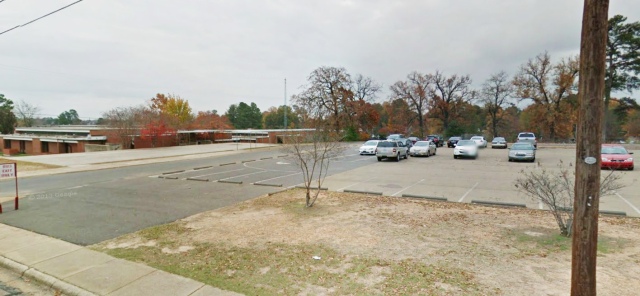
The old North heights Elementary from which we watched construction of the “new” Vera Kilpatrick (now half century old) was in front of the row of Oaks behind the cars.
Our main distraction that year, besides the occasional duck-and-cover drill, was watching the new North Heights Elementary School take shape down beyond the cafeteria. It looked like something from the future, as indeed it was. Brick, glass, aluminum and a large covered area for the school buses to load and unload. At that time, you had to live at least 3 miles from the school to ride the bus, so most walked or rode bicycles. The long lines of parents dropping and picking up students were a thing yet to come. Betty was a senior that year, and I walked with her as far as her friend Lynn Kitchen’s house just off County Avenue, played a few minutes with Lynn’s Pekingese (quite a rare site in those environs of beagles and walker hounds), and then walked up to the school where they caught the bus for the high school at the junior while I proceeded on to the elementary school. I was lucky that year, but after that my luck ran out. From the 3rd to the 9th grade I walked or rode my bike both ways rain, shine, or snow. The old building was demolished over the summer of 1957, and only a parking lot and a scattering of tired old bricks remained. The girls used them to outline playhouses under the great Oaks that had been behind the old school, and we boys used them to dam up the spring. I picked up one of these old bricks just a couple of years ago from that school yard. As I turned it in my hands I wondered how many generations had played with that brick without a clue as to how it came to be there. For reasons I cannot explain, that brick now rests in my garage. In those years I bonded with many friends I’d journey through the years of North Heights Elementary, then North Heights Junior High, and finally AHS with. Marschall Rivers was one special case who I’ve written about on my blog and elsewhere. Too many others to get into at this point, and wonderful teachers like Mrs. Carrigan, Mrs. Pridgeon, Mrs. Whatley, Mrs. Rhea, and more.
The “Bears!”
No way to describe how wonderful the experience of North Heights Junior High was. It was originally build as a high school, but demoted to a junior high when the high schools were consolidated with the completion of Arkansas High School. There were only around 250 of us, and everybody was in something. Few could be found in “civilian” clothes at a football game, as the band had almost 70 members, 40 or so were on the football team, and at least 50 in the Pep Squad and cheerleaders. It was a very special place. I don’t know about today, but back then Arkansas prided itself as being one step ahead of Mississippi in education. I’ve long since realized just how meaningless these ratings are. Fact is, this little school was packed with a group of the finest, most dedicated, hardworking teachers the planet has to offer. They shaped minds, built character, and motivated students to achieve their best. As I look at the windows in the picture of the building I can see into each classroom their and the teacher that occupied it. I can see Mrs. Walter’s blackboard with “pneumonoultramicroscopicsilicovolcanokoniosis” on it, Mrs. Tye’s “Word of the Day” on her board, Mrs. Vance stolid stare as I stumbled through “The Gettysburg Address,” and the others, all gentlefolk and scholars.
My first day in the 7th grade, I entered that hall and a banner across the front hall proclaimed “Welcome 7th Graders – You are now a BEAR!” The “new” NHJS is now the “Piggies.” Yuck. Even worse, College Hill Junior High is stuck with “Shoats.” My 9th grade year we were informed we were going to change to “shoats” and to a person, every student and parent responded “…not only no, but HELL NO.” A full grown Razorback is an animal to contend with. “Piggies” and “Shoats?” Not so much. I rather doubt there was more pride in any school in the city than old North Hicks, as we fondly referred to it amongst ourselves.
To be continued, God willing…
I wish to close with a few pictures of the current state of the house on 38th street, which I feel it safe to say is now “finished” after 56 years of continuous construction by my mother and brother. Actually, the block itself is near finished. Our home is the only residence left on the block. Undoubtedly destined to be a Target parking lot or something someday. I am currently living there on a temporary basis. Sandra, who walked that yard in diapers over half a century ago, still lives across the street with her husband Joe. Some of us either don’t leave, or come home. Such is the pull of old West North Heights and this strange two-headed city we call Texarkana.



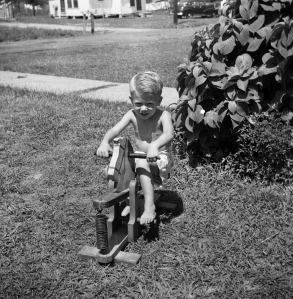
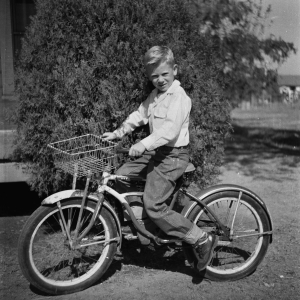
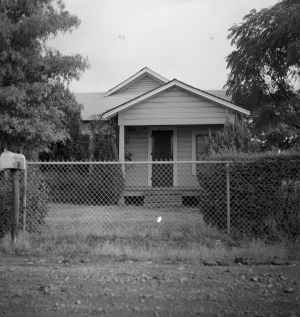
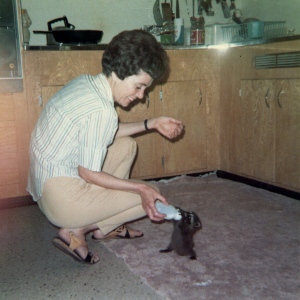
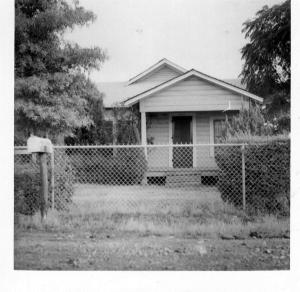
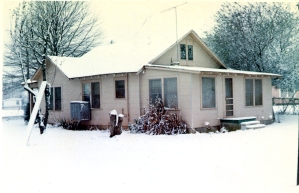
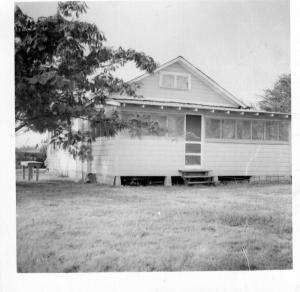
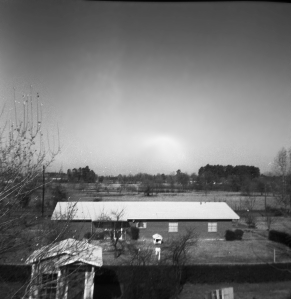
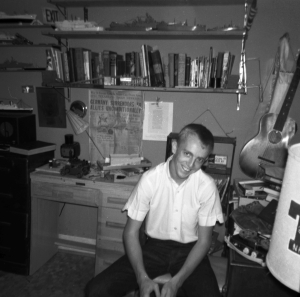
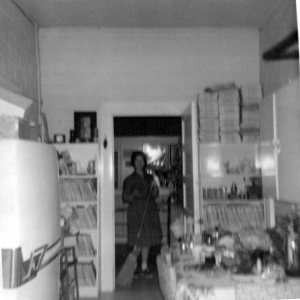
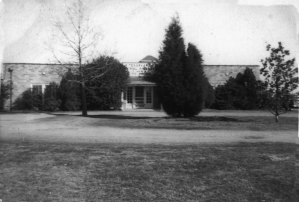
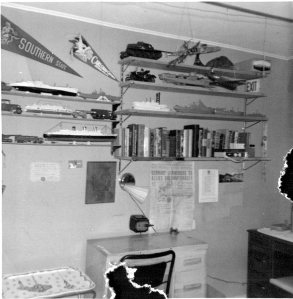
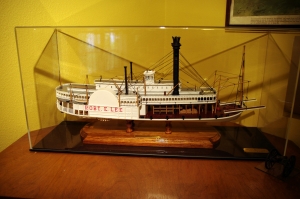
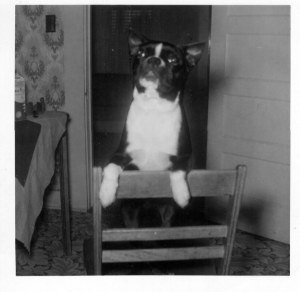
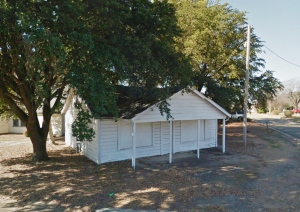
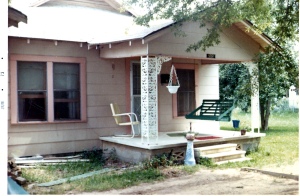
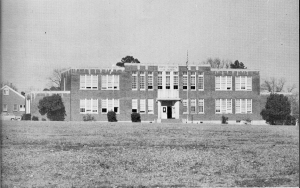
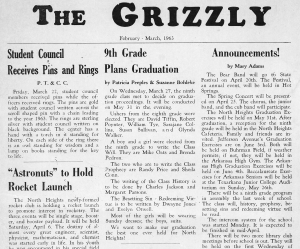
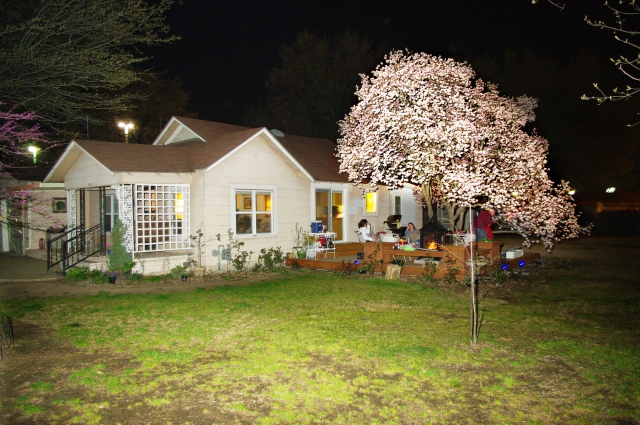
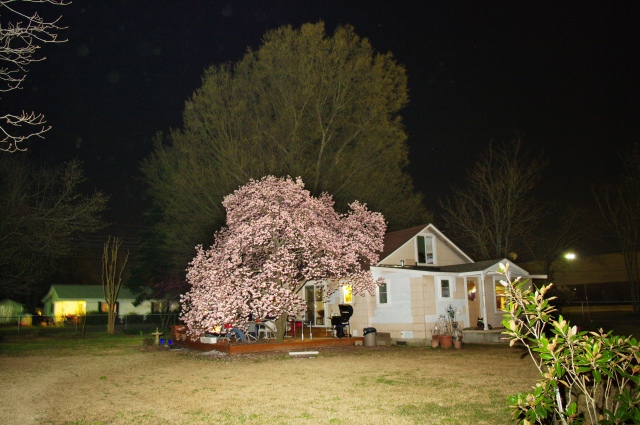
Great read. I too was born and raised in T-town but moved all over, I may have gone to every school district in town except North Heights. John Porter
Heck, John…you missed the best part! :-). Thanks for the comments.
Great story – enjoyed this part very much -thanks! Brought many memories back to me although I went to College Hill Elem., Jefferson Ave. Jr. High “Piggies”, and A.H.S., Class of 1966. Keep up the good work – looking forward to your book! Brenda (Douglass) Bailey, now of NW AR.
Thanks, Brenda. Sorry you had to be a “Piggie.” That’s OK…some of my best friends were. My Brother Billy lives on Beaver Lake, and his daughters both live in Rogers. One is a WalMart Buyer. I get up that way once or so a year.
As to the book, it will be a while. I hope to retire within 3 years and really start doing some things I want to do, including writing. Nice thing is I really don’t care if anyone reads it…it is just fun and I know my children, grandchildren, and so on will be fascinated by it. My mom left a few things she wrote at my urging and I treasure them. Stuff I’d never have known.
Loved reading this. I was asking about Hill’s store the other day. Both sets of my grandparents lived within blocks of his store, one on Hickory and one on Pecan right behind County Ave Baptist Church. I lived on County, across Arkansas Blvd and across what is now Wal Mart. So many great memories from that time of my life. I went to Vera Kilpatrick and North Heights Junior High, I was a Bear and then moved to Jefferson High and became a Piggie! Thanks for the blog and the memories!
Reading your story brought back memories. I was 9 when we moved in a white house that was on the corner of 39th of Senator st. Pat Winchester lived across the street which had lots of land and wooden area. He had a son named Johnny Winchester, an older son and daughter named Patsy Winchester. I did not know all of that it was very interesting reading about. I was born in 1956. Thanks for the story.
Thanks, Susie. Your comment allowed me to correct my discussion of the Winchesters. I really had forgotten that Patsy was Pat’s daughter. Duh.
Great memories.
Chet Daniel
But wait, there’s more… :-). Thanks, Chet. It’s really my pleasure.
I grew up on E. 35th off of State Line. Loved reading your blog, brought back a lot of memories and also learned a few things too. Thanks for helping preserve a little bit of North Heights history.
What fun reading this. I belong to the Facebook ~ Remember in Texarkana ~ group. I read your post about Sharky… although I didn’t know him, I enjoyed reading your tribute to him.
I graduated with your brother, Billy. When I saw your name… I thought… Mallette? saw your picture… it didn’t seem like that was Billy. I was so curious… clicked on your profile, found your blog and learned Billy had a little brother. 😉
Really enjoyed reading about all the semi familiar places. I grew up on E. 12th and was a Jefferson Avenue Piggie… HAHaaa… oh, lord… whatta name.
I left Texarkana in 1961 after I graduated … I would come back to see my parents but my memories of Texarkana are a bit different. My Dad, like your Dad, was a minister (Methodist not Baptist) …. he worked at Lone Star forever but had churches in the Texas conference first … in Old Boston then Olive Branch by Queen City. He later joined the Arkansas conference.
I had two older brothers … Douglas and Tommy … I was the baby and after we all left home… he retired then moved to the parsonages. He didn’t want to move us since we were all established at school plus he had worked at the Plant since the war… he retired with a good pension which … he spent everything he got from his Churches on the Churches.
He bought a house on E. 30th before he retired from Lone Star and kept it through the years of living in parsonages … My oldest brother still lives there.
Fun to read about Billy … being such a great big brother… what I remember about him was his smile… always a great smile… and why do I remember white shirts and jeans… ha… interesting… ah … the late 50’s…. what a crew we were…
Nice to meet you 😉
Carolyn Yates Patterson
Thanks, Carolyn. Wonderful comments. Many of us never seem to quite be able to leave Texarkana for reasons that defy logic. I’ve been away since 1971, but still love to go back. I’ll be there tomorrow in advance of my friend Paul’s funeral.
I’ll mention you to Billy. He built a home up on Beaver Lake in Northwest Arkansas near his two daughters.
Yes… say high to him … if he doesn’t remember me … I bet he’ll remember my ol pal, Jeanie Angel … 😉
My condolences on your loss of your pal… Jeanie died of breast cancer at age 53… still hard to imagine her not around….
Carolyn, I remember your Dad. He was my grandparents, L.B. & Jennie Waldon’s pastor at Olive Branch Methodist Church. I’ve visited that church as a girl and your Dad preached at Grandma’s funeral and visited the family at her home in Bright Star (Doddridge, AR). Good man. It really is a small world. WOW!
Brenda Douglass Bailey
Thank you, Brenda… oh, yes. Doddridge .. he had that little church also in the beginning then just Olive Branch. He was there for eleven years…
It is a small world… indeed 😉
HAhaaa… oh, me… say high … I keep my 9 month old grandson and he was grabbing for the computer… that’s my excuse … and I’m sticking to it… ! Hi to Billy 😉
Not sure how I found this blog. I worked @ KTFS from 1959 until 1971 the at KATQ 71-72. Worked in radio in Brownsville, San Angelo,and Temple as well as South Carolina, Colorado, and New Mexico. KTFS was back in the good old days of radio, it is not the same anymore.
Fascinating. There were few less memorable DJs than “Dave Alan,” that being me, but I suspect we overlapped at either or both of those stations. I recall a foretaste of where I would actually wind up being useful in learning to program the “Continental Electronics Prolog Mark II” automation system at KATQ/KADO. While the station used in in analog mode (moving pins around to trigger events) it also had a digital tape drive I learned that a growing firm by the name of Electronic Data Systems run by a Texarkana boy by the name of Ross Perot could program for us. Of course, ran into him a bit later!
Thanks for the post!
Very much enjoyed the walk down the memory lane. I lived on 37th and then moved to 38 and beech. I was called Butch and was with Sharky”Paul” Robbins, Jerry Sullivan and David Williams and Richard Cobb. I remember Ms Walter and her study hall and also George Dobson, that lived on the corner of 37 and beech. He was an announcer/dj and had a pet monkey. Great memories. Thanks
My pleasure, Butch.